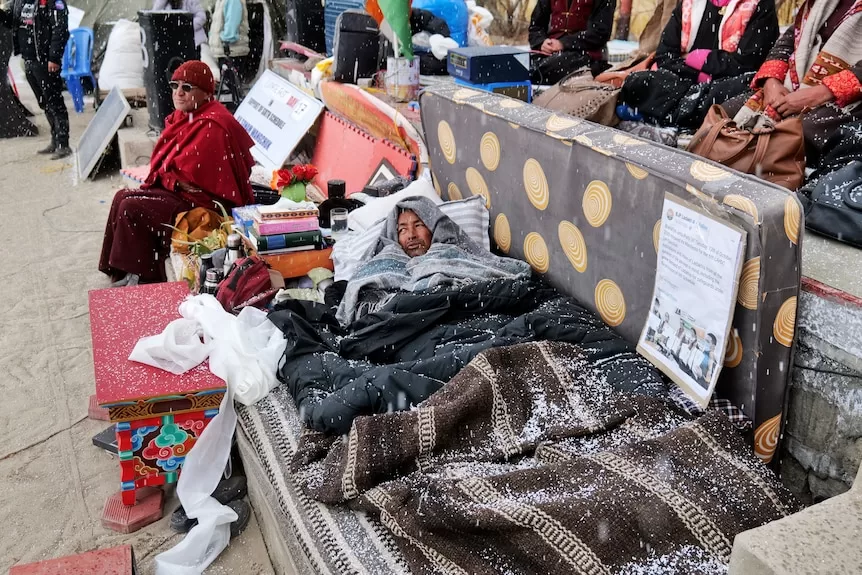- In short: Thousands of people are protesting in freezing conditions in a remote part of India.
- The group is demanding climate action and greater autonomy over how the land in Ladakh is used from the Indian government.
- One protestor has been undertaking what he calls a “climate fast” and has been living outdoors in freezing conditions for more than two weeks.
Thousands of people in a remote part of India have begun a third week of protests in freezing conditions, demanding constitutional provisions from the government to protect their territory’s fragile ecology and to have autonomy over land and agriculture decisions.
Nestled between India, Pakistan and China, Ladakh has faced territorial disputes and suffered the effects of climate change.
Shifting weather patterns in the sparsely populated villages altered people’s lives through floods, landslides and droughts.
Prominent climate activist Sonam Wangchuk is taking part in the demonstrations in the town of Leh.
He has been on a fast since the protests started on March 6, surviving only on salt and water in the open in sub-zero temperatures.
Temperatures have been as low as minus six degrees and snowing in recent days.
Mr Wangchuk, also an engineer working on solutions for sustainability at his Himalayan Institute of Alternative Ladakh, has called his protest a “climate fast.”
“We’re already facing climate disaster and these glaciers and mountains will be destroyed if there is not a check on unbridled industrial development and military maneuvers [in the region],” Mr Wangchuk told The Associated Press.
He has been joined by about 200 other people sleeping under the open sky as part of the demonstration.
Ladakh region a ‘water tower’ of the world
Ladakh’s thousands of glaciers — which helped dub the rugged region one of the “water towers of the world” — are receding at an alarming rate, threatening the water supply of millions of people.
The melting has been exacerbated by an increase in local pollution that has worsened due to the region’s militarization, further intensified by the deadly military stand-off between India and China since 2020.
He also said Ladakh critically needs ecological protection because “it’s not just a local disaster in [the] making but an international one as these mountains are part of Greater Himalayas intricately linked to over two billion people and multiple countries.”
Mr Wangchuk said the Ladakh nomads were also losing prime pastureland to huge Indian industrial plans and Chinese encroachment.
The region’s shepherds complain that Chinese soldiers have captured multiple pasturelands and restricted them from grazing their herds.
The shepherds and Mr Wangchuk are planning to march to the Chinese border later this month to underscore what they say is Beijing’s land grab attempts in Ladakh to gain territory.
In August 2019, Ladakh was split from Indian-controlled Kashmir after New Delhi stripped the disputed region of its statehood and semi-autonomy.
While restive Kashmir has largely been silenced through a crackdown on any form of dissent and slew of new laws, demands for political rights in Ladakh have intensified with demands of statehood and for local legislature to be able to frame their own laws on land and agriculture.
The region’s representatives have held several rounds of talks with Indian officials, including with the powerful Home Minister Amit Shah earlier this month, without any results.
“This government likes to call India the ‘Mother of Democracy’,” Mr Wangchuk recently posted on X.
“But if India denies democratic rights to people of Ladakh and continues to keep it under bureaucrats controlled from New Delhi then it could only be called a Stepmother of Democracy as far as Ladakh is concerned.”
AP/ABC
